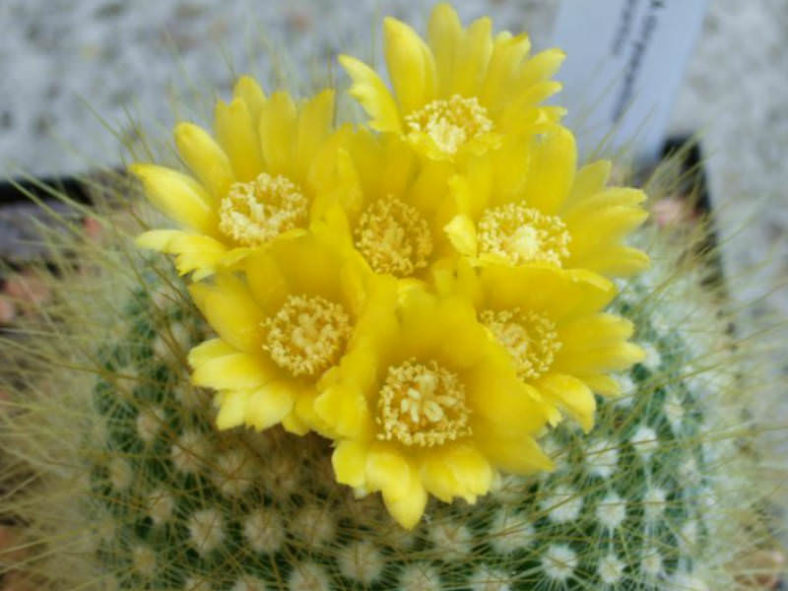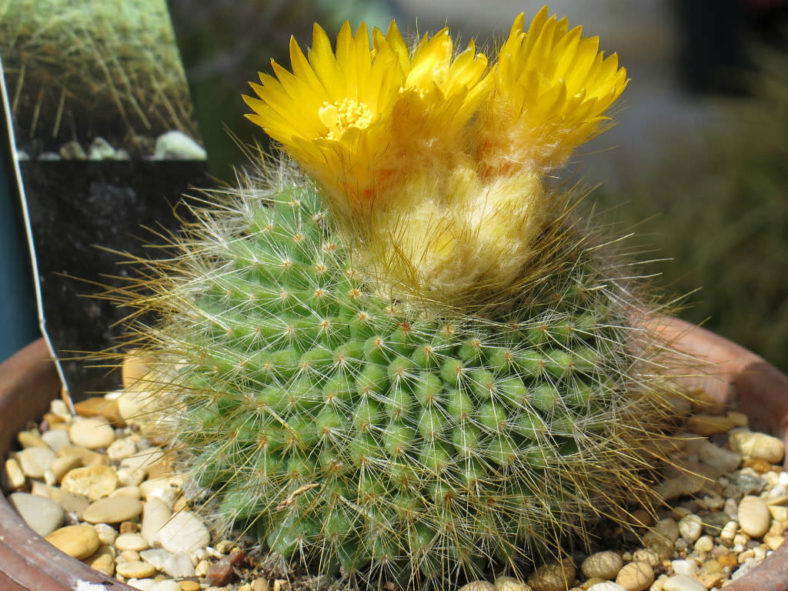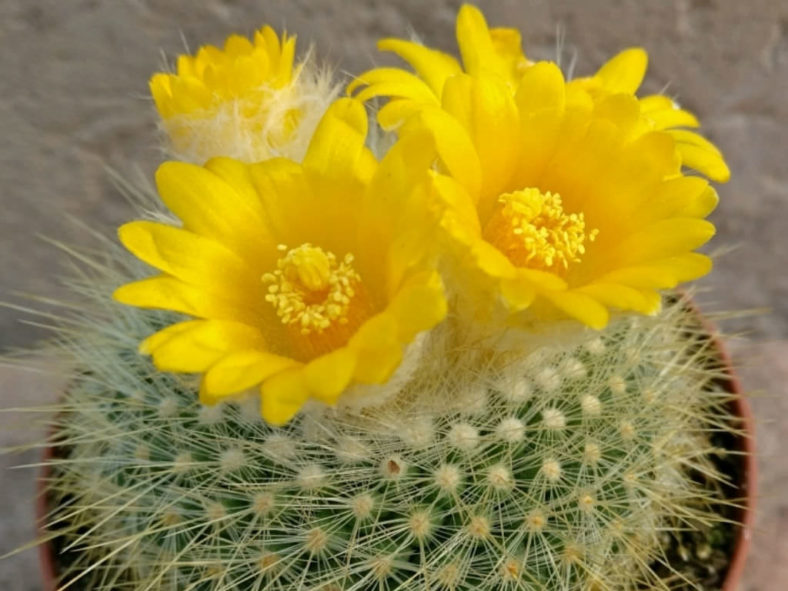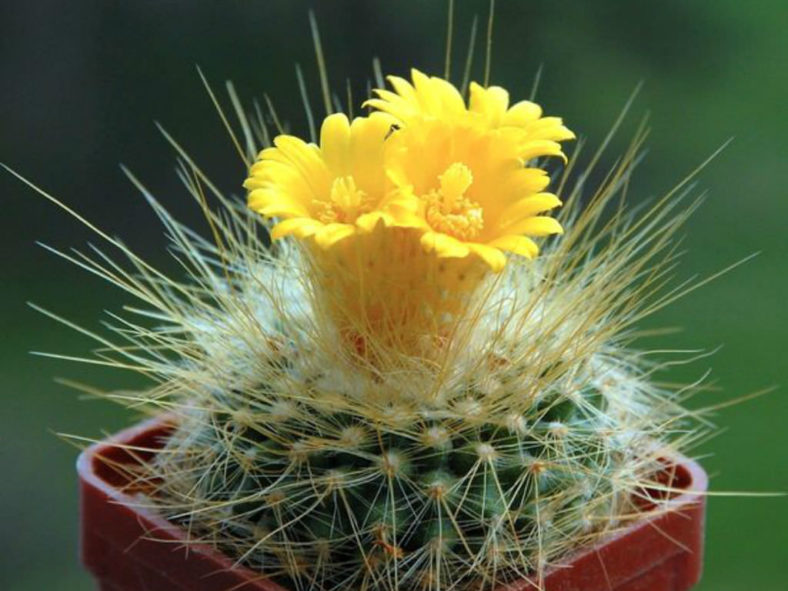Scientific Name
Parodia chrysacanthion (K. Schum.) Backeb.
Common Name(s)
Golden Powder Puff
Synonym(s)
Bolivicactus chrysacanthion, Echinocactus chrysacanthion, Gymnocalycium chrysacanthion
Scientific Classification
Family: Cactaceae
Subfamily: Cactoideae
Tribe: Notocacteae
Genus: Parodia
Etymology
The specific epithet "chrysacanthion" (pronounced "kris-ak-ANTH-ee-on") means "having small golden spines."
Origin
Parodia chrysacanthion is native to Argentina (Jujuy).
Description
Parodia chrysacanthion is a small cactus with a spherical to short-cylindrical, usually solitary stem with many spirally arranged ribs and densely covered with golden yellow spines. The stem can grow up to 4.8 inches (12 cm) tall and 4 inches (10 cm) in diameter. Each yellowish-white areole bears a cluster of 30 to 40 straight, needle-like to bristle-like spines measuring up to 0.8 inches (2 cm) long.
The flowers are yellow and funnel-shaped and appear at the tips of the stems in summer. They can reach a diameter of 0.8 inches (2 cm).

Hardiness
USDA hardiness zones 9a to 11b: from 20°F (-6.7°C) to 50°F (10°C).
How to Grow and Care
If you can grow cacti and succulents successfully, you can likely grow the popular Parodia without too much trouble. However, it is key to remember that Parodia do not like direct sunlight and are accustomed to more even water than many other cacti species. The cactus mustn't be exposed to prolonged dampness and standing water. Never let your cactus sit in a dish of water. To encourage better flowering, allow the plants to enjoy a cooling period in the winter and dramatically cut back watering. Unlike other cacti species, however, you don't need to stop watering entirely. Lastly, fertilize during the growing season for the best results.
Repot as needed, preferably during the warm season. To repot Parodia, ensure the soil is dry before repotting, then gently remove the pot. Knock away the old soil from the roots, removing any rotted or dead roots. Treat any cuts with a fungicide. Place the plant in its new pot and backfill it with potting soil, spreading the roots as you repot.
Learn more at How to Grow and Care for Parodia.
Links
- Back to genus Parodia
- Succupedia: Browse succulents by Scientific Name, Common Name, Genus, Family, USDA Hardiness Zone, Origin, or cacti by Genus
Photo Gallery
Click on a photo to see a larger version.


